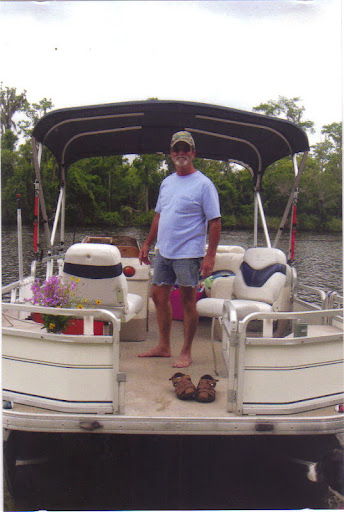William H Ernst
age ~85
from Cincinnati, OH
- Also known as:
-
- William A Ernst
- William M Ernst
- Bill H Ernst
- William H Ernest
- Ernst Ernst
- Patricia Moore
William Ernst Phones & Addresses
- Cincinnati, OH
- 2321 Brookfield Greens Cir, Sun City Ctr, FL 33573 • (813)6420752
- Sun City Center, FL
- Alpharetta, GA
- Rochester Hills, MI
- Hillsboro Bch, FL
- Roswell, GA
- Sun City Ctr, FL
- Warren, MI
- Harrisburg, PA
Work
-
Company:Computer repair2007
-
Position:Web design, computer technician
Education
-
School / High School:Pasco Hernando Community CollegeJan 2010
-
Specialities:A.S. In progress
Isbn (Books And Publications)


Organizing a Local Government Documents Collection
view sourceAuthor
William B. Ernst
ISBN #
0838902847
License Records
William H. Ernst
License #:
PIC.010767 - Active
Issued Date:
Jan 29, 1976
Expiration Date:
Dec 31, 2017
Type:
Pharmacist-in-Charge (V)
William H. Ernst
License #:
PST.010767 - Active
Issued Date:
Jan 29, 1976
Expiration Date:
Dec 31, 2017
Type:
Pharmacist
William Matthew Ernst
License #:
3350 - Expired
Category:
Pharmacy
Issued Date:
Sep 15, 2010
Effective Date:
Jan 7, 2011
Expiration Date:
Jan 1, 2011
Type:
Pharmacy Technician
Name / Title
Company / Classification
Phones & Addresses
Partner
Ernst, William R CPA
Offices of Certified Public Accountants
Offices of Certified Public Accountants
5086 Wooster Rd, Cincinnati, OH 45226
(513)8713033, (513)8716173
(513)8713033, (513)8716173
EMPLOYEE BENEFIT OPTIONS, INC
Cincinnati, OH
ERNST & RABE, INC
Cincinnati, OH
President
Ernst Enterprises Inc
Commercial Real Estate Agent
Commercial Real Estate Agent
32811 Middlebelt Rd, Farmington, MI 48334
(248)7372604, (248)7373703
(248)7372604, (248)7373703
FIRST AID SERVICES, INC
Cincinnati, OH
President
E & R BULL CORPORATION
2003 Hwy 19 S, Perry, FL 32347
254 Vangogh Cir, Dover, OH 44622
254 Van Gogh Cir, Brandon, FL 33511
PO Box 1112, Perry, FL 32348
254 Vangogh Cir, Dover, OH 44622
254 Van Gogh Cir, Brandon, FL 33511
PO Box 1112, Perry, FL 32348
Principal, President
The Church Ofjesus Christ Inc of St Petersburg
Religious Organization
Religious Organization
131 4 Ave N, Saint Petersburg, FL 33701
1701 18 Ave S, Saint Petersburg, FL 33712
1701 18 Ave S, Saint Petersburg, FL 33712
Us Patents
-
Method And Composition For Attracting Arthropods By Volatilizing An Acid
view source -
US Patent:7347994, Mar 25, 2008
-
Filed:Sep 12, 2003
-
Appl. No.:10/661724
-
Inventors:Joel Tenney - Marietta GA, US
Tom Isaac - Newnan GA, US
William Ernst - Roswell GA, US -
Assignee:ICA Trinova, LLC - Forest Park GA
-
International Classification:A01N 25/08
A01N 25/12
A01N 59/04
A01N 59/16
A01N 37/02 -
US Classification:424 84, 424409, 424647, 424666, 424700, 424715, 424716, 424717, 514557, 431321
-
Abstract:The invention is a method for attracting mosquitoes by producing a volatilized acid by combining an acid precursor with water to produce the humidified vapor acid attractant, preferably hydrogen chloride. The humidified volatilized acid can be further combined with carbon dioxide, or carbon dioxide can be simultaneously produced to attract mosquitoes. The acid precursor can be a hydrate of ferric chloride, such as ferric chloride hexahydrate. The acid precursor can be impregnated in a carrier, and can be combined with water through exposure to water vapor in the atmosphere, the intentional addition of water, or water produced by a chemical reaction.
-
Composition And Method For Producing Carbon Dioxide
view source -
US Patent:7922992, Apr 12, 2011
-
Filed:Sep 13, 2002
-
Appl. No.:10/243590
-
Inventors:William Ernst - Roswell GA, US
Joel Tenney - Marietta GA, US
Tom Isaac - Newnan GA, US -
Assignee:ICA Trinova, LLC - Forest Park GA
-
International Classification:A23L 3/3427
-
US Classification:423438, 25218311, 25218316, 25218625, 25218636, 426263
-
Abstract:The invention is a method and composition for producing carbon dioxide that is based on the reaction or activation of at least one carbon-containing compound with protons. The carbon-containing compound can be in the form of a powder, an impregnated carrier (e. g. zeolite crystals) or an aqueous solution and is preferably selected from the group consisting of carbonates, bicarbonates or sesquicarbonates. The protons are preferably provided by a proton-generating species such as an acid or metal salt. The method and composition can further include a water-retaining substance and/or a chlorine dioxide-producing compound in accordance with the invention.
-
Method And Composition For Attracting Arthropods By Volatilizing An Acid
view source -
US Patent:20080138372, Jun 12, 2008
-
Filed:Feb 18, 2008
-
Appl. No.:12/032885
-
Inventors:Joel TENNEY - Marietta GA, US
Tom Isaac - Newnan GA, US
William Ernst - Roswell GA, US -
International Classification:A01N 59/00
A01N 25/34
A01N 59/08 -
US Classification:424409, 424 84
-
Abstract:The invention is a method for attracting mosquitoes by producing a volatilized acid by combining an acid precursor with water to produce the humidified vapor acid attractant, preferably hydrogen chloride. The humidified volatilized acid can be further combined with carbon dioxide, or carbon dioxide can be simultaneously produced to attract mosquitoes. The acid precursor can be a hydrate of ferric chloride, such as ferric chloride hexahydrate. The acid precursor can be impregnated in a carrier, and can be combined with water through exposure to water vapor in the atmosphere, the intentional addition of water, or water produced by a chemical reaction.
-
Removal Of Inorganic Contaminants From Catalysts
view source -
US Patent:45593132, Dec 17, 1985
-
Filed:Jul 25, 1983
-
Appl. No.:6/517027
-
Inventors:Allan S. Myerson - Marietta GA
William R. Ernst - Roswell GA -
Assignee:Georgia Tech Research Institute - Atlanta GA
-
International Classification:B01J 2394
B01J 2120
C22B 300
C12D 1300 -
US Classification:502 25
-
Abstract:Spent catalysts containing metal impurities are treated by a process comprising treating the spent catalyst with a solution containing oxidizing ferric ion and/or oxidizing bacteria, thereby freeing said spent catalyst of said metal impurities.
Resumes

William Ernst
view source
Financial Controller
view sourceLocation:
Cincinnati, OH
Industry:
Restaurants
Work:
Mazunte Taqueria
Financial Controller
Mazunte Taqueria May 2018 - Jun 2019
The Intern
Mazunte Taqueria May 2015 - Aug 2018
Line Cook
Financial Controller
Mazunte Taqueria May 2018 - Jun 2019
The Intern
Mazunte Taqueria May 2015 - Aug 2018
Line Cook
Education:
University of Dayton 2015 - 2019
St. Xavier High School 2011 - 2015
St. Xavier High School 2011 - 2015

William Ernst
view sourceWork:
Ayer-Shirley Regional High School
Education:
Ayer - Shirley Regional High School 2014 - 2018

William Ernst
view sourceLocation:
Ruskin, FL
Industry:
Information Technology And Services
Work:
National Computer Leasing Feb 1995 - May 2001
Vice President Operations
Pitney Bowes Jan 1961 - Dec 1995
Retired
Vice President Operations
Pitney Bowes Jan 1961 - Dec 1995
Retired

Project Consultant
view sourceWork:
Stockmohr
Project Consultant
Project Consultant

William Ernst
view sourceClassmates

William Ernst
view sourceSchools:
Loyola Blakefield Jesuit School Towson MD 1961-1965
Community:
Greg Digiorgio, Thomas Wunderer, Thomas Suter

William Ernst
view sourceSchools:
George Washington High School Los Angeles CA 1958-1962
Community:
Vincent Aguilar, Wendy Hull, Rick Fahilga

William Ernst
view sourceSchools:
Immaculate Conception High School Elmhurst IL 1970-1974
Community:
Richard Kasnick, Tim Mcevoy, Robert Rodriguez

William Ernst
view sourceSchools:
St. Teresa High School Decatur IL 1942-1946
Community:
Micah Newcomb, Deborah Hippler, Jim Sober, Michael Grossman

William Ernst
view sourceSchools:
Arcola High School Arcola IL 1970-1974
Community:
Clarissa Fleshner, Pamela Drake

William Ernst II
view sourceSchools:
Bellevue High School Bellevue NE 1971-1975
Community:
Debra Brazda, Tannis Casement

Oak Lawn Community High S...
view sourceGraduates:
William Ernst (1977-1981),
Marie Wroblewski (1961-1965),
Kelly Kirby (1996-2000),
Phil Dizonno (1973-1977),
Leann Krull (1972-1976),
Joshua Smok (1994-1998)
Marie Wroblewski (1961-1965),
Kelly Kirby (1996-2000),
Phil Dizonno (1973-1977),
Leann Krull (1972-1976),
Joshua Smok (1994-1998)

Coronado High School, Col...
view sourceGraduates:
william ernst (1980-1984),
Stacey Mann (1981-1985),
Dave Johnson (1980-1984),
Amanda Martinez (1983-1987),
Tim Holt (1968-1972)
Stacey Mann (1981-1985),
Dave Johnson (1980-1984),
Amanda Martinez (1983-1987),
Tim Holt (1968-1972)
Myspace
Youtube
Flickr

William Ernst Ott
view source
William Ernst
view source
William Ernst Christian...
view source
William Lee Ernst
view source
William Ernst
view source
William Ernst
view source
William Ernst
view source
William Ernst
view sourceGoogleplus

William Ernst
Work:
Lifetime Assistance - Caregiver
Education:
The College at Brockport - International Business, The College at Brockport - Adolescent History Education with certification in Special Education
Tagline:
I win

William Ernst

William Ernst

William Ernst

William Ernst

William Ernst

William Ernst

William Ernst
Get Report for William H Ernst from Cincinnati, OH, age ~85















